Here's the text.
Red tide
Last Updated July 29, 2024
About the red tide
Red tide is a phenomenon in which seawater discolors due to abnormal growth of plankton. When the ocean is polluted and nutrients such as phosphorus and nitrogen increase in seawater, plankton increases abnormally due to temperature and other effects.
Seawater may turn reddish brown or orange due to the growth of plankton, and sometimes turn blue-green. This kind of plankton is called red tide plankton.
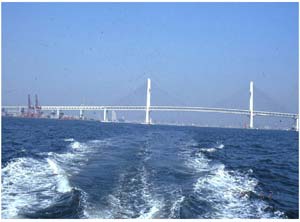 The Sea of Yokohama
The Sea of Yokohama
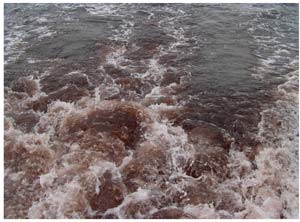 The Sea of Yokohama in the Red tide
The Sea of Yokohama in the Red tide
Red tide generation mechanism
Tokyo Bay contains a lot of nitrogen and phosphorus, which are nutrients of plankton. When the temperature of seawater rises from spring to autumn, phytoplankton in seawater and animalplankton that preyes on it grow.
An abnormally large breeding of certain planktons causes seawater to become muddy and red tide.
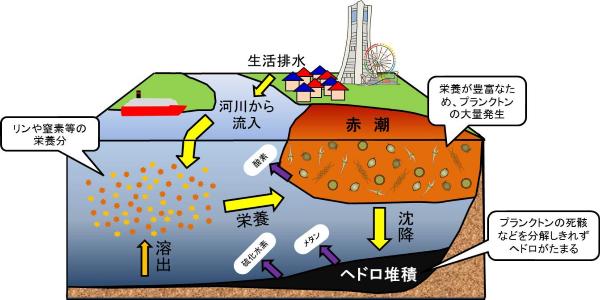
Image of red tide occurrence
Characteristics of Tokyo Bay
Surface layer
- Because phytoplankton performs photosynthesis, there is a lot of oxygen.
- The outbreak period is concentrated in June, with abnormal breeding of algae when the water temperature exceeds around 20 ° C.
- A major factor is the increase in water temperature to the appropriate temperature after rainfall.
Bottom layer
- Oxygen is consumed by the decomposition of organic matter, and an oxygen water mass is formed.
- There are many creatures that can live without oxygen.
Plankton at Yokohama Port
Here are some of the red tide plankton found at Yokohama Port.
Spiral algae
Spiral algae are single cell and have two whip hairs. You can move this whip hair to swim around.
Depending on the type, there are various characteristics, such as armor plate (yoroiban), which is covered with hard shells, and those that are connected to each other to form a cluster.
Some species are harmful to fish and shellfish and humans, but no recent cases have been found at Yokohama Port.
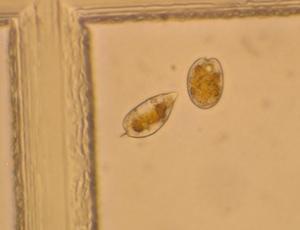 Left: Prorocentrum.micans right: Prorocentrum.mexicanum
Left: Prorocentrum.micans right: Prorocentrum.mexicanum
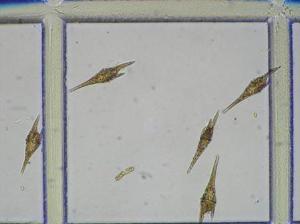 Ceratium sp.
Ceratium sp.
Algae
Algae have brown chlorophylls and perform photosynthesis. Also, since they don't have whip hair, they rarely move around.
It can occur in large quantities from spring to summer, but few are toxic to seafood and humans.
Various types of algae are also confirmed in Yokohama Port throughout the year.

Skeletonema sp.
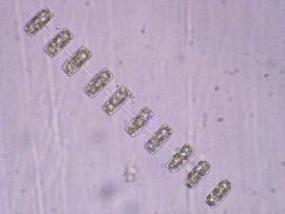
Thalassiosira sp.
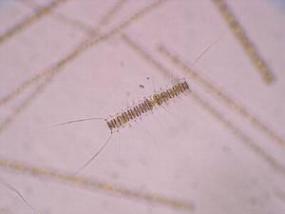
Chaetoceros sp.
Inquiries to this page
Environmental Science Research Institute, Environmental Conservation Department, Green Environment Bureau
Telephone: 045-453-2550
Telephone: 045-453-2550
Fax: 045-453-2560
Email address: mk-kanken@city.yokohama.lg.jp
Page ID: 886-257-168







